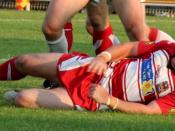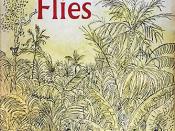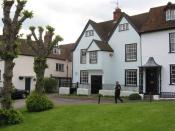Symbolism is an effective tool that represents ideas through symbols. In a modernized and advanced state of human society, symbolism could represent civilization, where as in a barbaric state of human society symbolism could represent savagery. In William Golding's novel, Lord of the Flies, he uses symbolism to show the transition from civilization to savagery. The various symbols that portray the movement from being civilized to becoming savages are symbols such as the conch, Piggy's glasses, and the fire.
To start with, symbolism is a key aspect in the novel Lord of the Flies because it represents the movement from civilization to savagery as evident through the symbol of the conch. Firstly, the conch symbolizes civilization at the beginning of the novel because when Ralph and Piggy discover it, they use the conch to call everybody together to decide on what they were going to do to survive.
Once all the children came together Ralph told them "⦠we're having a meeting. Come and join in." (Golding 16) As a result, everybody at the meeting did not panic but instead made a plan on how to survive, and it represents civilization and order on the island. Next, the transition from civilization to savagery is becoming clear when the conch starts to lose its power. For example, Jack says "The conch doesn't count on top of the mountain." (42) The behaviour in the civilization on the island, which once existed, is starting to dislodge and change because of the circumstances. Finally, the movement from civilization to savagery is complete when Roger throws the rock down the hill, which kills Piggy and shatters the conch. "⦠The conch exploded into a thousand white fragments and ceased to exist."(200). With the conch shattering, the last ounce of civilization was lost,


